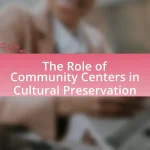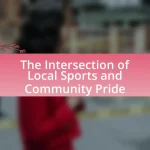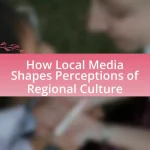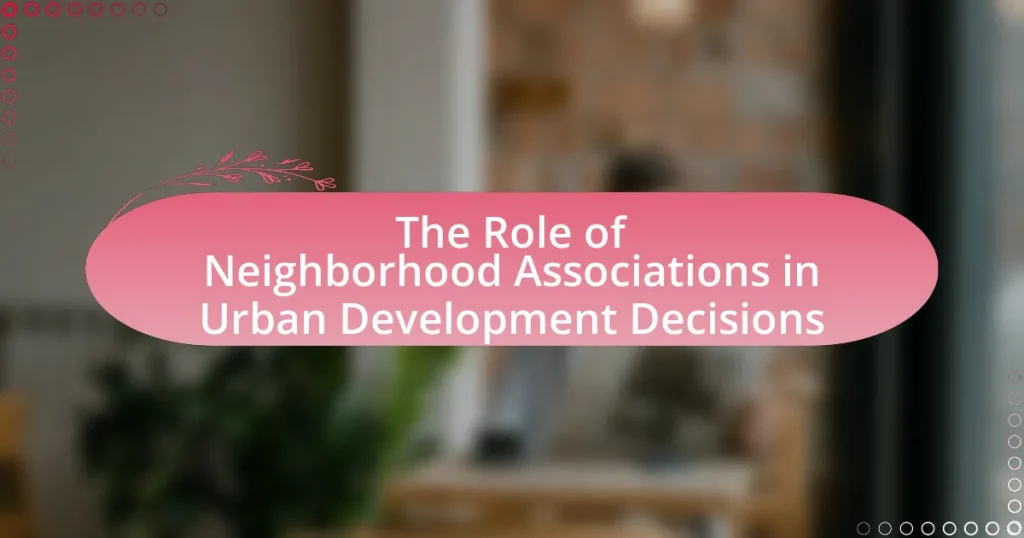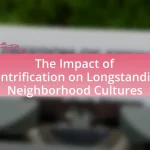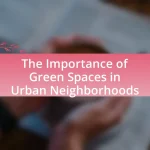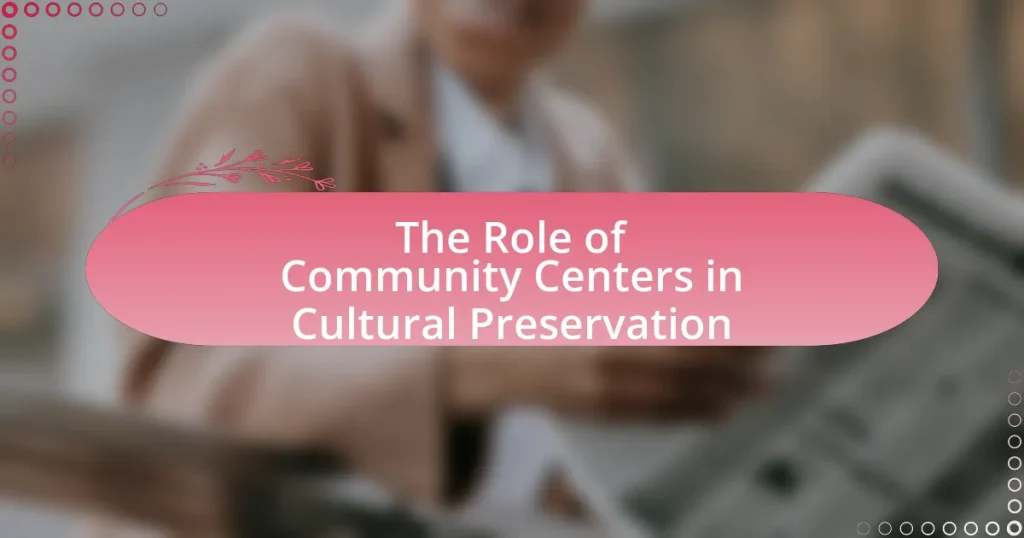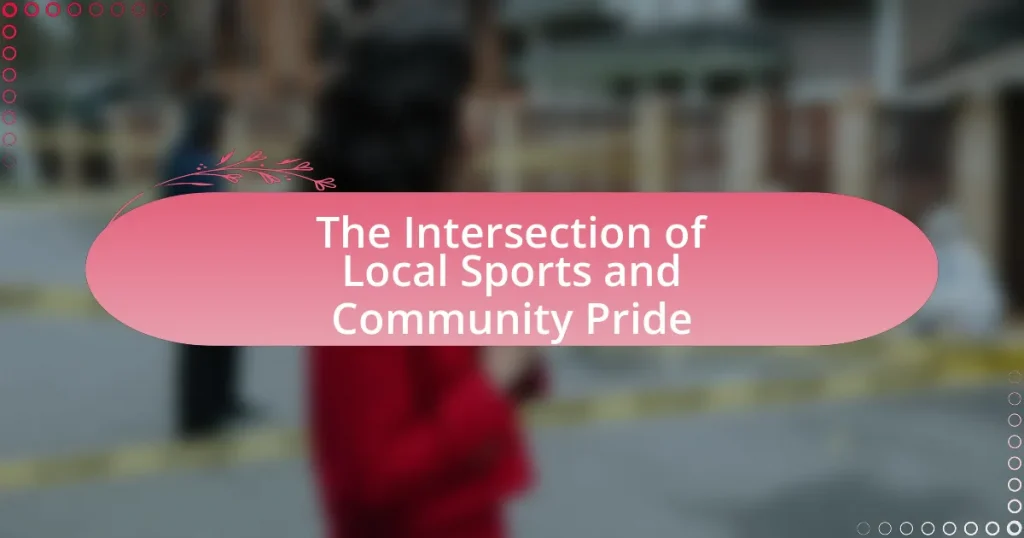Neighborhood associations are pivotal in urban development decisions, serving as representatives for local residents and facilitating community engagement. They influence urban planning by advocating for community interests, participating in public meetings, and shaping development policies. The article explores the key functions of these associations, their methods of engagement with urban planners and developers, the challenges they face, and the strategies they can adopt to enhance their impact. Additionally, it highlights the benefits they provide to communities during development projects and the importance of effective communication and collaboration in addressing conflicts and achieving favorable outcomes in urban planning.
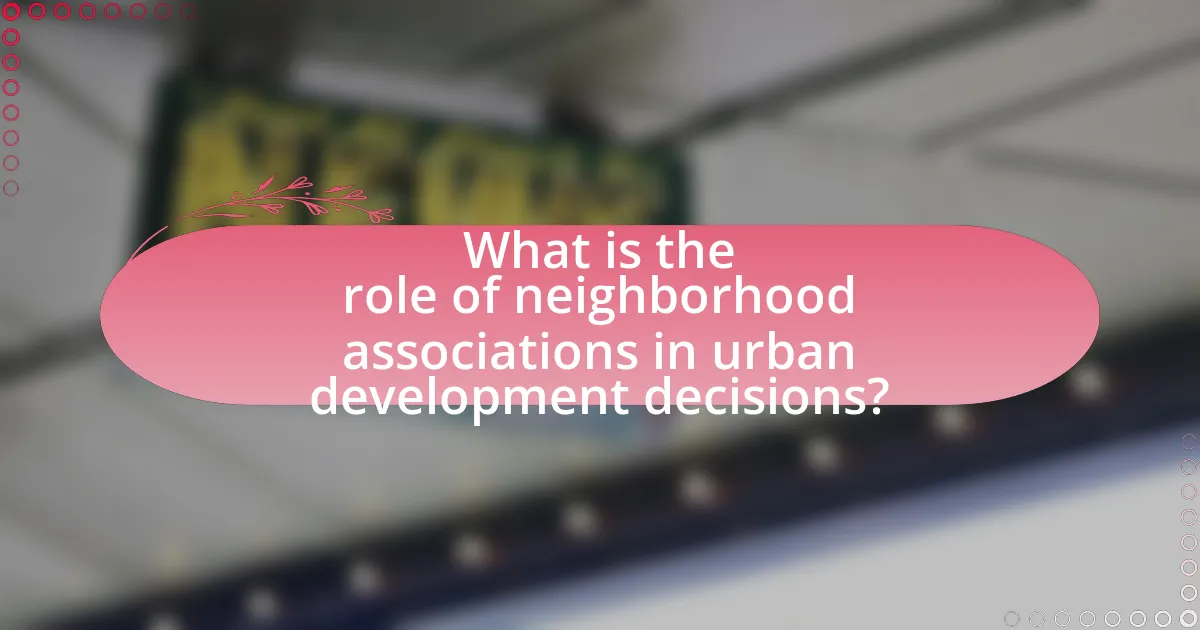
What is the role of neighborhood associations in urban development decisions?
Neighborhood associations play a crucial role in urban development decisions by representing the interests and concerns of local residents. These associations facilitate community engagement, allowing residents to voice their opinions on proposed developments, zoning changes, and infrastructure projects. Research indicates that neighborhoods with active associations often experience more favorable outcomes in development processes, as these groups can influence policymakers and developers through organized advocacy and public meetings. For instance, a study by the Lincoln Institute of Land Policy found that neighborhoods with strong associations are more likely to achieve community-oriented development goals, demonstrating their significant impact on urban planning.
How do neighborhood associations influence local urban planning?
Neighborhood associations influence local urban planning by advocating for community interests and shaping development policies. These associations often engage in public meetings, provide feedback on proposed projects, and mobilize residents to voice their concerns, thereby impacting decision-making processes. For instance, a study by the American Planning Association found that neighborhoods with active associations are more likely to have their input considered in zoning changes and infrastructure projects, demonstrating their significant role in urban planning outcomes.
What are the key functions of neighborhood associations in this context?
Neighborhood associations play a crucial role in urban development decisions by facilitating community engagement, advocating for residents’ interests, and fostering collaboration between local government and citizens. These associations serve as a platform for residents to voice concerns, share ideas, and influence planning processes, ensuring that development aligns with community needs. For instance, studies show that neighborhoods with active associations often experience more responsive local governance and improved project outcomes, as these groups can mobilize residents to participate in public meetings and provide feedback on proposed developments.
How do neighborhood associations engage with urban planners and developers?
Neighborhood associations engage with urban planners and developers through organized meetings, public forums, and collaborative planning processes. These associations often provide feedback on proposed developments, advocate for community interests, and facilitate communication between residents and planning authorities. For instance, many urban planning initiatives require public input, and neighborhood associations serve as a vital conduit for gathering community perspectives, ensuring that local voices are heard in decision-making. This engagement can lead to more community-oriented development outcomes, as seen in cities where associations have successfully influenced zoning changes and project designs to reflect residents’ needs and preferences.
Why are neighborhood associations important in urban development?
Neighborhood associations are important in urban development because they serve as a platform for community engagement and advocacy, influencing local planning and policy decisions. These associations represent the interests of residents, ensuring that their voices are heard in the development process. Research indicates that neighborhoods with active associations often experience improved communication with city officials, leading to more responsive urban planning that aligns with community needs. For instance, a study by the Urban Institute found that neighborhoods with strong associations are more likely to secure funding for local projects, demonstrating their critical role in shaping urban environments.
What benefits do they provide to the community during development projects?
Neighborhood associations provide several benefits to the community during development projects, including enhanced local engagement, improved communication between residents and developers, and the promotion of community interests. These associations facilitate discussions that ensure community voices are heard, leading to more tailored development outcomes that reflect local needs. For instance, studies show that neighborhoods with active associations often experience better project alignment with community values, resulting in increased satisfaction and support for new developments. Additionally, these associations can advocate for infrastructure improvements and social services that directly benefit residents, thereby fostering a stronger sense of community and enhancing overall quality of life.
How do they represent the interests of residents in urban planning processes?
Neighborhood associations represent the interests of residents in urban planning processes by actively engaging in community outreach, facilitating public meetings, and advocating for resident concerns. These associations gather input from local residents through surveys and discussions, ensuring that diverse perspectives are considered in planning decisions. For example, a study by the American Planning Association found that neighborhoods with active associations are more likely to influence zoning changes and development projects, demonstrating their effectiveness in shaping urban policies that reflect community needs.
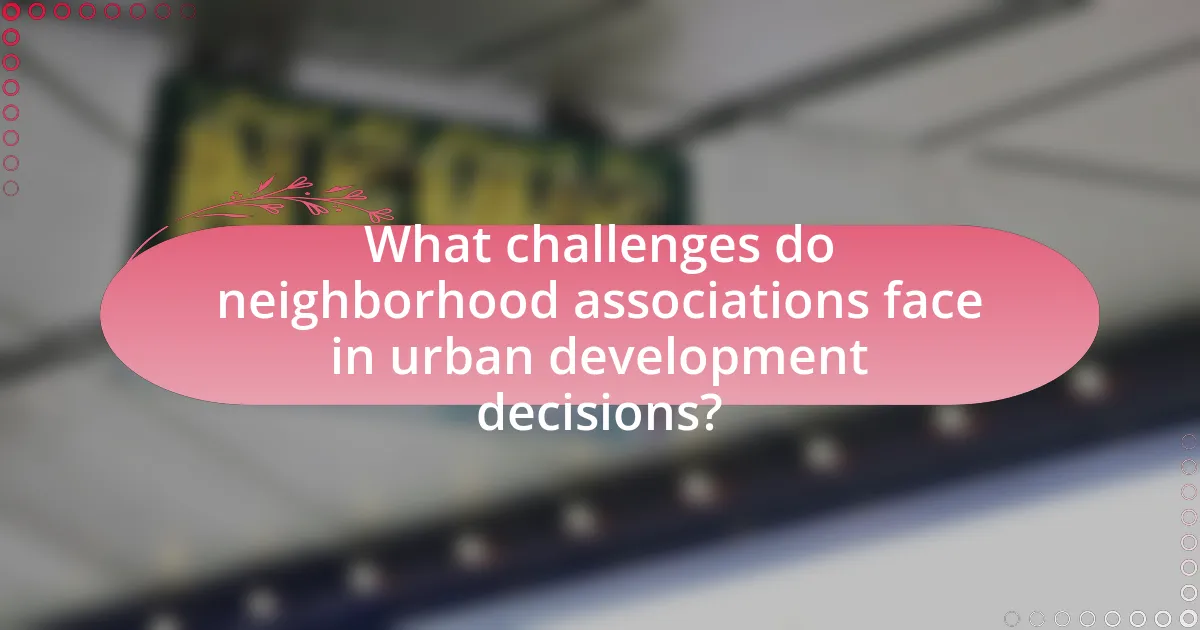
What challenges do neighborhood associations face in urban development decisions?
Neighborhood associations face significant challenges in urban development decisions, primarily due to limited resources and influence. These associations often struggle with inadequate funding, which restricts their ability to conduct thorough research or hire experts to advocate for their interests. Additionally, they may encounter resistance from developers and local governments who prioritize economic growth over community concerns, leading to conflicts in decision-making processes. A study by the Lincoln Institute of Land Policy highlights that neighborhood associations frequently lack the necessary legal authority to enforce their preferences, making it difficult to impact urban planning effectively.
How do conflicts arise between neighborhood associations and developers?
Conflicts arise between neighborhood associations and developers primarily due to differing priorities and interests regarding land use and community impact. Neighborhood associations often prioritize preserving the character of their community, maintaining property values, and ensuring that developments align with local needs, while developers focus on maximizing profitability and meeting market demands. For instance, a study by the Urban Land Institute highlights that neighborhood groups frequently oppose projects perceived as too dense or incompatible with existing structures, leading to disputes over zoning changes and project approvals. These opposing objectives can result in tensions, public hearings, and legal challenges, illustrating the complex dynamics at play in urban development decisions.
What are common points of contention in urban development discussions?
Common points of contention in urban development discussions include issues related to gentrification, zoning regulations, environmental impact, and community engagement. Gentrification often leads to displacement of long-term residents, raising concerns about affordability and cultural preservation. Zoning regulations can create conflicts between developers and neighborhood associations, particularly regarding land use and density. Environmental impact assessments frequently spark debate over sustainability and ecological preservation versus economic growth. Lastly, the level of community engagement in the decision-making process is contentious, as neighborhood associations advocate for local interests while developers seek to expedite projects. These points of contention reflect the complex interplay between development goals and community needs.
How can neighborhood associations effectively address these conflicts?
Neighborhood associations can effectively address conflicts by fostering open communication and collaboration among residents and stakeholders. By organizing regular meetings and forums, associations create a platform for residents to voice concerns and discuss potential solutions. Research indicates that community engagement leads to more informed decision-making and enhances trust among participants, which is crucial for conflict resolution. For instance, a study by the Urban Institute found that neighborhoods with active associations reported a 30% increase in community satisfaction and a reduction in disputes related to urban development projects. This demonstrates that proactive engagement and transparent dialogue are essential strategies for neighborhood associations to mitigate conflicts effectively.
What limitations do neighborhood associations encounter in their influence?
Neighborhood associations encounter several limitations in their influence, primarily due to a lack of formal authority and limited resources. These associations often operate on a voluntary basis, which restricts their ability to enforce decisions or policies effectively. Additionally, they may struggle with insufficient funding, which hampers their capacity to conduct outreach, organize events, or hire professional consultants for urban development projects. Furthermore, neighborhood associations may face challenges in representing diverse community interests, leading to conflicts and reduced effectiveness in advocating for specific development initiatives. Studies indicate that these factors collectively diminish their overall impact on urban planning and development decisions.
How does funding affect the capabilities of neighborhood associations?
Funding significantly enhances the capabilities of neighborhood associations by providing the necessary resources to implement projects and initiatives. With adequate funding, these associations can organize community events, improve local infrastructure, and engage in advocacy efforts more effectively. For instance, a study by the Urban Institute found that neighborhood associations with access to financial resources are more likely to successfully influence urban development decisions, as they can hire experts, conduct research, and mobilize community members. This financial backing allows associations to address local issues, foster community engagement, and ultimately contribute to more sustainable urban development outcomes.
What role does community engagement play in overcoming these limitations?
Community engagement plays a crucial role in overcoming limitations in urban development decisions by fostering collaboration between residents and decision-makers. This collaboration enhances transparency, ensuring that community voices are heard and considered in planning processes. For instance, studies show that neighborhoods with active associations experience improved project outcomes, as these groups can articulate local needs and preferences, leading to more tailored and effective development solutions. Additionally, community engagement can mitigate conflicts and resistance to change by building trust and promoting shared ownership of urban initiatives.
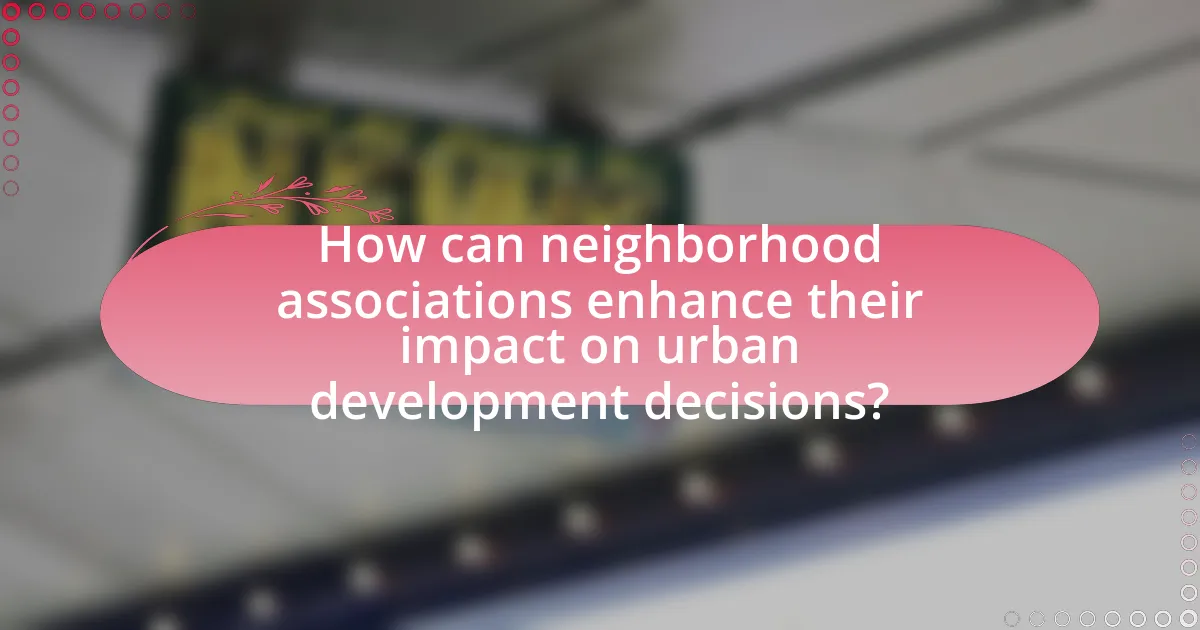
How can neighborhood associations enhance their impact on urban development decisions?
Neighborhood associations can enhance their impact on urban development decisions by actively engaging in community planning processes and advocating for residents’ interests. By organizing public forums, conducting surveys, and collaborating with local government, these associations can effectively communicate the needs and preferences of their communities. Research indicates that neighborhoods with strong associations often see more favorable outcomes in development projects, as they can provide valuable local insights and foster partnerships with city planners. For instance, a study by the Lincoln Institute of Land Policy found that community engagement significantly improves the alignment of urban development with resident priorities, leading to more sustainable and accepted outcomes.
What strategies can neighborhood associations adopt for effective advocacy?
Neighborhood associations can adopt several strategies for effective advocacy, including building strong coalitions, engaging in community education, and utilizing data-driven approaches. Strong coalitions enhance collective bargaining power, allowing associations to present unified positions on urban development issues. Engaging in community education empowers residents with knowledge about local policies and development processes, fostering informed participation. Data-driven approaches, such as gathering and analyzing demographic and economic data, provide evidence to support advocacy efforts, making arguments more compelling to policymakers. These strategies have been shown to increase the effectiveness of neighborhood associations in influencing urban development decisions.
How can they build coalitions with other community organizations?
Neighborhood associations can build coalitions with other community organizations by establishing clear communication channels and shared goals. By organizing joint meetings and collaborative projects, these associations can foster relationships based on mutual interests and community needs. Research indicates that successful coalitions often arise from shared objectives, as seen in the collaboration between the National Neighborhood Coalition and local organizations, which has led to enhanced community engagement and resource sharing.
What methods can they use to increase resident participation in urban planning?
To increase resident participation in urban planning, neighborhood associations can implement methods such as hosting community workshops, utilizing online platforms for feedback, and conducting surveys to gather resident input. Community workshops facilitate direct engagement, allowing residents to voice their opinions and collaborate on planning initiatives. Online platforms, such as social media and dedicated websites, provide accessible channels for residents to share their thoughts and stay informed about urban planning developments. Surveys can quantitatively assess resident preferences and concerns, ensuring that diverse viewpoints are considered in decision-making processes. These methods have been shown to enhance community involvement, as evidenced by case studies where increased participation led to more representative urban planning outcomes.
What best practices should neighborhood associations follow in urban development?
Neighborhood associations should prioritize community engagement, transparency, and collaboration in urban development. Engaging residents through regular meetings and surveys ensures that diverse perspectives are considered, fostering a sense of ownership and inclusivity. Transparency in decision-making processes builds trust and encourages participation, while collaboration with local government and developers can lead to more effective and sustainable outcomes. Research indicates that neighborhoods with active associations often experience improved project outcomes and community satisfaction, as seen in studies conducted by the Urban Institute, which highlight the positive impact of organized community input on urban planning initiatives.
How can they effectively communicate with stakeholders in the development process?
Neighborhood associations can effectively communicate with stakeholders in the development process by utilizing structured meetings, transparent information sharing, and active engagement strategies. Structured meetings allow for organized discussions where stakeholders can voice their concerns and suggestions, fostering a collaborative environment. Transparent information sharing ensures that all parties have access to relevant data and updates, which builds trust and reduces misinformation. Active engagement strategies, such as surveys and community forums, encourage stakeholder participation and feedback, leading to more informed decision-making. Research indicates that effective communication in urban development can enhance community support and project success, as seen in the case of the San Francisco Planning Department’s community engagement initiatives, which resulted in higher satisfaction rates among residents.
What tools and resources are available to support their efforts?
Neighborhood associations can utilize various tools and resources to support their efforts in urban development decisions. These include community engagement platforms, such as Nextdoor and Facebook Groups, which facilitate communication and collaboration among residents. Additionally, access to planning software like GIS (Geographic Information Systems) allows associations to visualize data related to land use and demographics, enhancing their ability to advocate for community needs. Furthermore, resources from local government agencies, such as planning departments and community development offices, provide essential information on zoning laws, development proposals, and funding opportunities. Research indicates that effective use of these tools can lead to increased community participation and more informed decision-making in urban development processes.
What practical steps can neighborhood associations take to influence urban development positively?
Neighborhood associations can influence urban development positively by actively engaging in community planning processes. They can organize public forums to gather resident input, ensuring that the voices of community members are heard in decision-making. Additionally, associations can collaborate with local government officials to advocate for policies that reflect the community’s needs, such as affordable housing initiatives or green space preservation.
Research shows that neighborhoods with active associations often see better alignment between development projects and community interests, leading to enhanced quality of life. For instance, a study by the Urban Institute found that community engagement in planning leads to more equitable development outcomes. By leveraging these strategies, neighborhood associations can effectively shape urban development in a way that benefits their communities.
